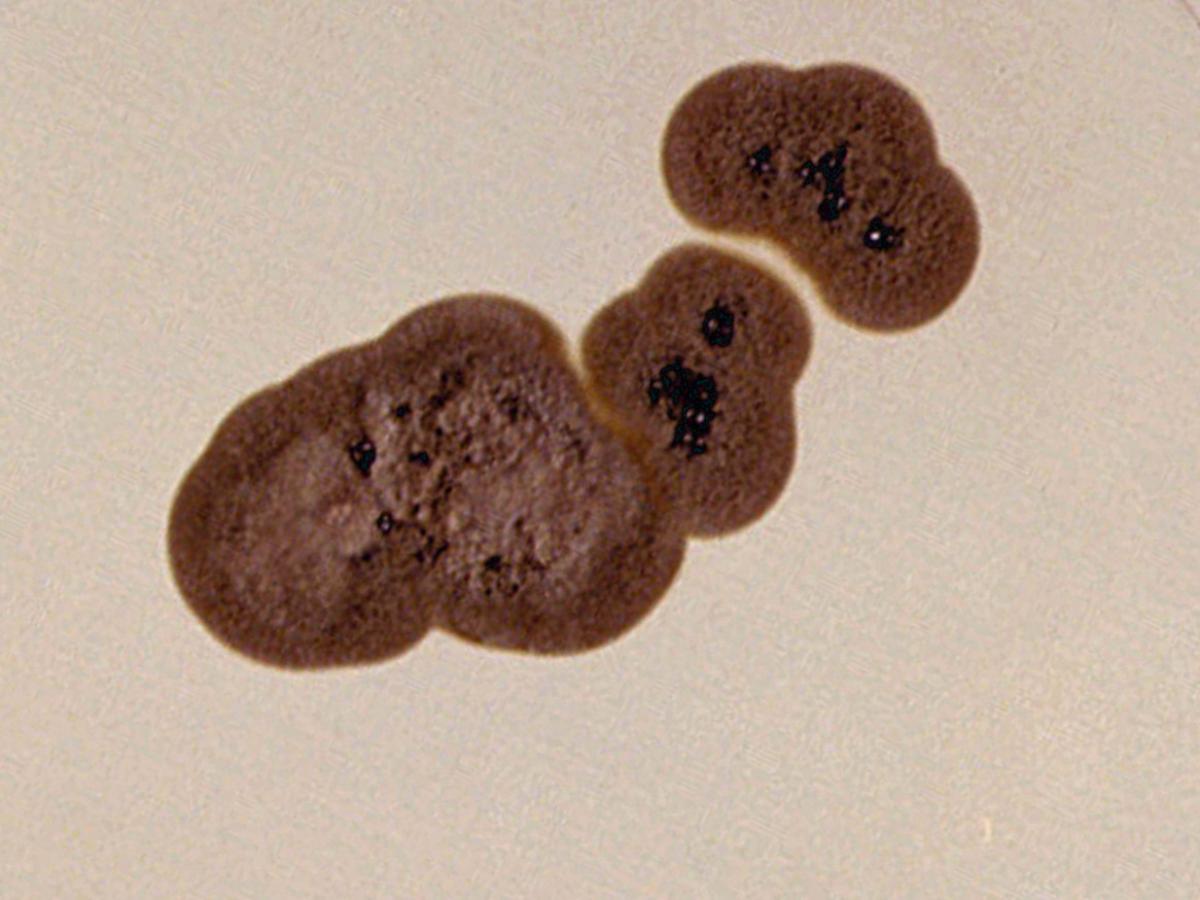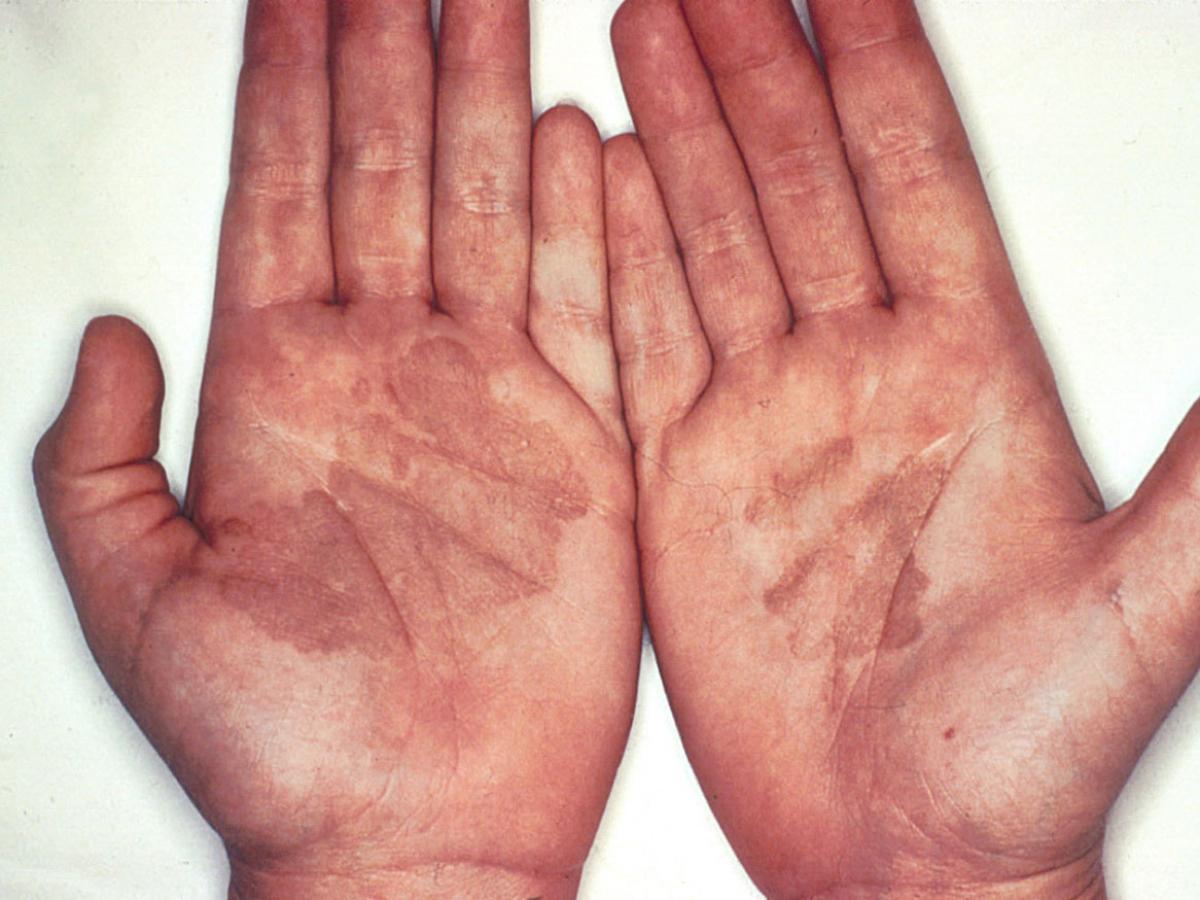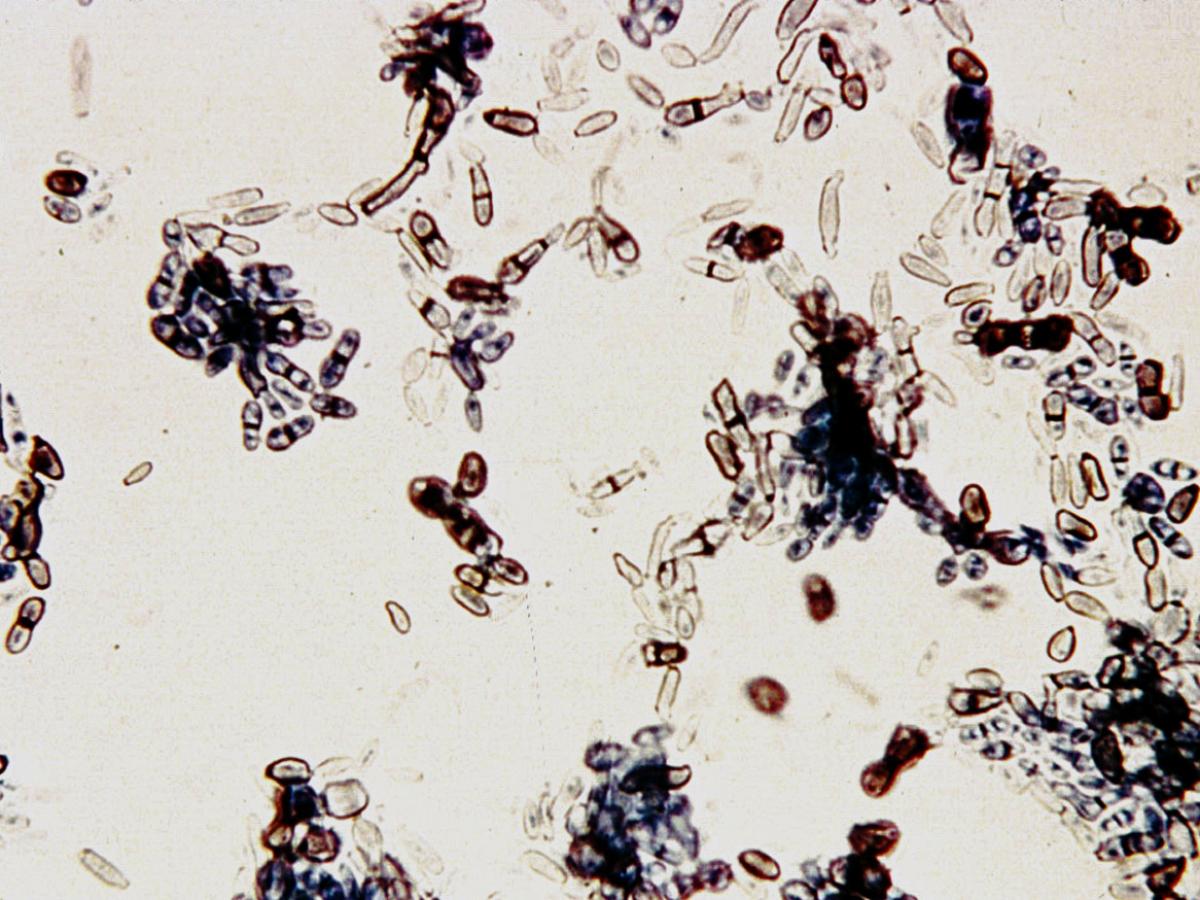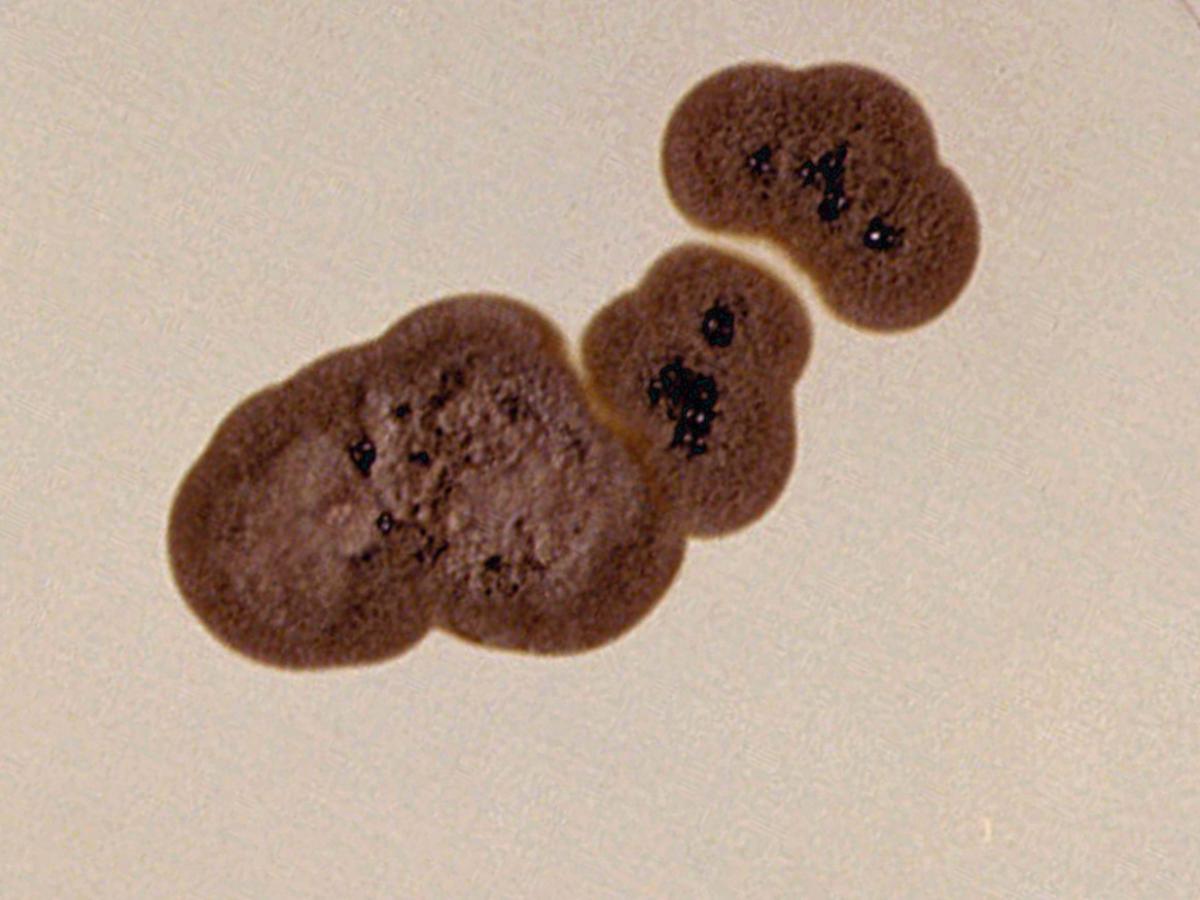Status message
Correct! Excellent, you have really done well. Please find additional information below.
Unknown 22 = Hortaea werneckii
Clinical presentation: Brown to black, non-scaling macules on the palmar aspect of the hands are typical of Tinea nigra. Note there is no inflammatory reaction.

Direct microscopy: Skin scrapings mounted in 10% KOH showing pigmented brown to dark olivaceous (dematiaceous) septate hyphal elements and 2-celled yeast cells producing annelloconidia typical of Hortaea werneckii.

Culture: Cultures of Hortaea werneckii are slow growing, initially mucoid, yeast-like and shiny black. With age they develop abundant aerial mycelia and become dark olivaceous in colour.

Microscopy: Microscopically, colonies consist of brown to dark olivaceous septate hyphal elements and numerous 2-celled, pale brown, cylindrical to spindle-shaped yeast-like cells that taper towards the ends to form an annellide. Most yeast-like cells also have prominent darkly pigmented septa. Annellides may also arise from the hyphae. Conidia are l to 2-celled, cylindrical to spindle-shaped, hyaline to pale brown and usually occur in aggregated masses.

Comment: Hortaea werneckii is a common saprophytic fungus believed to occur in soil, compost, humus and on wood in humid tropical and sub-tropical regions and is the causative agent of tinea nigra in humans. Tinea nigra is a superficial fungal infection of skin characterized by brown to black macules which usually occur on the palmar aspects of hands and occasionally the plantar and other surfaces of the skin. Lesions are non-inflammatory and non-scaling. Familial spread of infection has been reported.
About Hortaea Back to virtual assessment




